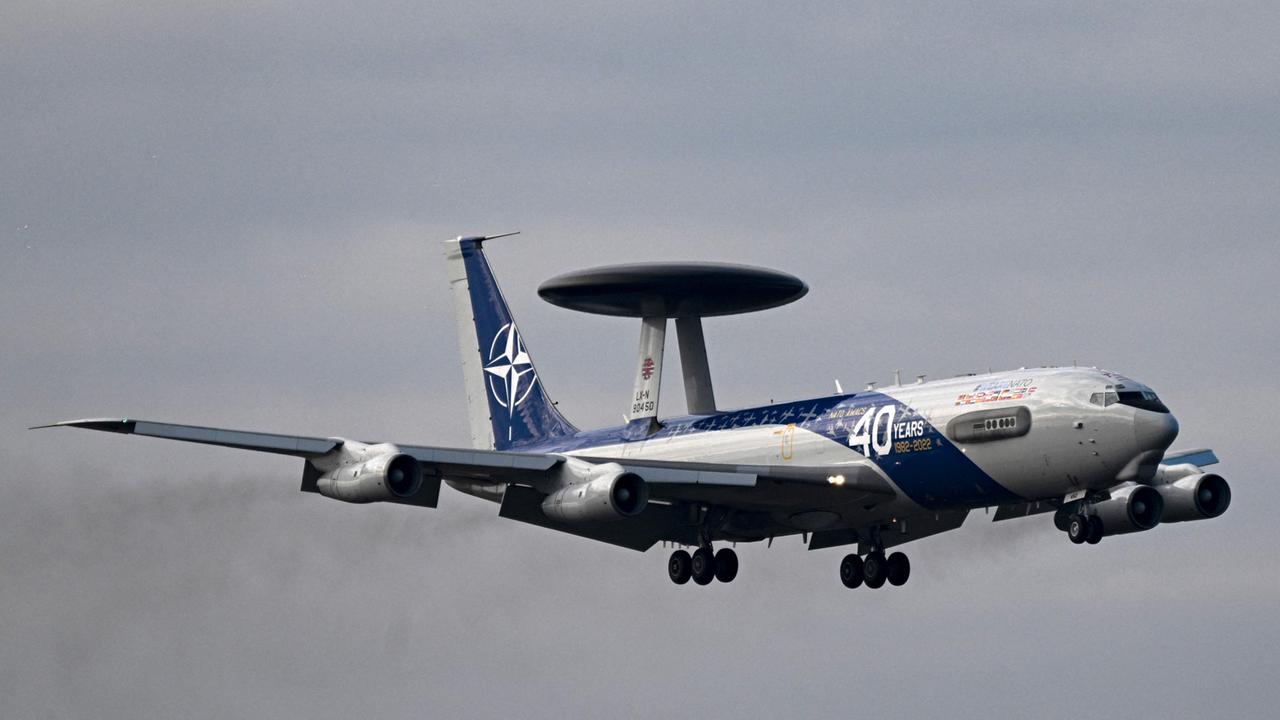Spy balloons and Russian cruise missiles: Unknown flying objects keep flying over Poland. NATO wants to prepare for further “provocative actions”. But the security of the eastern flank has gaps.
Search for a balloon-like flying object. If you find the object, don’t pick it up. Inform the police immediately!
This message came last week in an automatic warning SMS on Polish mobile phones. The Polish government’s security center sent them after two suspected Belarusian spy balloons flew over the Polish border. The Air Force had sent out fighter jets – but the balloons have disappeared. One had left Polish airspace for Denmark, it was later said. The other one is gone – not the first flying object to disappear.
Secretary of Defense blames the military
A Russian cruise missile probably fell into a forest near Bromberg in mid-December – and remained there until the debris was found by accident in April. This causes confusion in Poland – also politically. However, Mariusz Błaszczak, the defense minister, rejects calls for his resignation – and shifts the responsibility to the Polish military. I didn’t tell him that.
“The procedures within the framework of NATO have been initiated correctly,” declared Błaszczak. The flight readiness as well as Polish and American fighter jets had been activated. Polish radar stations also registered the flying object. “But the investigations have shown that the Operations Command failed in its duty to inform me,” the defense minister continued.
Prepared for “provocative actions”?
NATO was in the know, but the Department of Defense wasn’t? What if a Russian missile, which – according to the reports – is capable of transporting nuclear warheads, travels almost 500 kilometers into Poland’s interior? Polish President Andrzej Duda spoke to NATO Secretary General Jens Stoltenberg this week, also about changed processes within the defense alliance. In order to be prepared for – according to the presidential office – further “provocative actions”.
The incidents showed above all that NATO’s eastern flank is not impenetrable, explains military expert Mariusz Cielma. “The lower such a missile flies, the harder it is to be detected by radar. I’m afraid that in such a case there are many places where NATO radars, especially the Polish ones, are unable to detect them. And if so, then only for a brief moment.”
NATO provides effective support, especially with the “AWACS” reconnaissance aircraft. But these are stationed in Germany – so there is a large time window in which the missiles can fly over the Polish border without being detected, the military expert continues.
Commander appeals to reason
Polish Prime Minister Mateusz Morawiecki has since expressed his confidence – in the defense minister and the military. But the discrepancies between the minister and the military are great. This is shown by the extraordinary step that the commander of the operational command decided to take. General Tomasz Piotrowski, scolded by the defense minister, went public on social media:
“I’m addressing you with an appeal to reason, so that emotions calm down in the next few days,” Piotrowski said to Defense Minister Blaszczak. “I appeal to you that we are strong and united, that we support each other so that there are no more situations that help the opponent and harm us.”
Even if the rocket that landed in the Polish forest was most likely destined for Ukraine, even if the Belarusian spy balloons pose no direct threat to the population: Moscow will certainly register how quickly NATO reacts on the eastern flank – or not.





